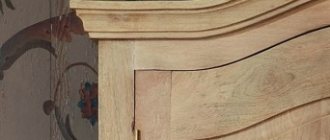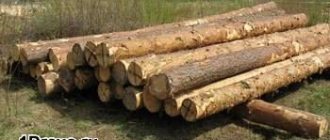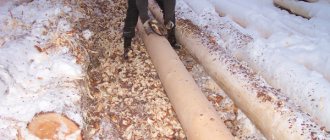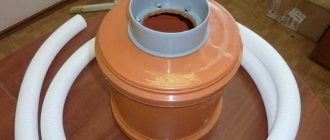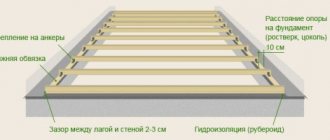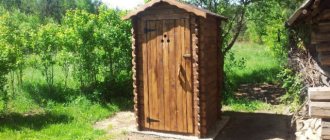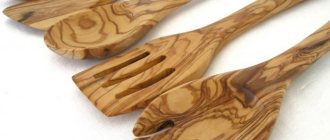In our article we want to talk about forests. What are they for a person? Forest plantations effectively purify the air and aquifers, maintain soil fertility and protect lands from erosion, and also take part in shaping the climate. In addition, they are suppliers of wild medicinal herbs, mushrooms, berries, and nuts. We propose to consider different types of forests based on the modern classification, according to which the division occurs depending on the varieties of terrestrial plants that dominate the plantings.
What is the soil like in the mixed forest zone?
The soils are predominantly soddy-podzolic and, in South America, New Zealand and the mountain forests of Eurasia, brown forest soils. They contain more humus than the podzolic soils of the taiga. Mixed forests are of ancient origin and were much more widespread in the geological past.
Interesting materials:
When and where was Ilya Muromets born? When and where was Iskander born? When and where was Rembrandt born? When and where did Kutuzov die? When and where did Romeo and Juliet premiere? When and where did paper first appear in Europe? When and how to properly prepare brooms for a bath? When and how do cherry blossoms bloom? When and how did Lomonosov get to Moscow? When and where do swifts fly?
Osinniki
Aspen forests are soft-deciduous deciduous stands with a predominance of aspen trees. They are formed only on good soils in a favorable climate. Many aspen trees grow in the European part of Russia and in southern Siberia. In the steppes, trees can be located in small areas. Aspens grow very quickly, having the ability to reproduce by root suckers, quickly colonize deforestation areas, producing fresh shoots in the second year.
The tree has very valuable wood, but at present it has somehow been undeservedly forgotten. But its quality is equal to oak wood.
Recommendations
- ^ a b c d f g gram h i j
Brown, James A. (1990).
Brown, James A.; O'Brien, Patricia J. (Ed.). The Oak Forest Site: Studies of a Oneot Subsistence Settlement in the Cal-Sag Area of Cook County, Illinois, Indiana On the Frontier of Prehistory: Huber's Phase Archeology of the Chicago Area
. Kampsville, IL: Center for American Archaeology. - ^ a b c d e
Bluhm, Elaine A.;
Fenner, Gloria J. (1961). Oak Forest Site, IN Chicago Area Archeology
. University of Illinois Press, Urbana, IL: Illinois State Bulletin of Archaeological Research No. 3. - Brown, James A., ed. (1961). Zimmerman Site: Report of Excavations at the Great Village of Kaskaskia, LaSalle County, Illinois
. Springfield, IL: Illinois State Museum, Investigative Reports No. 9. - Brown, Margaret Kimball (1975). Zimmerman Site: Further Excavations at the Great Village of Kaskaskia
. Springfield, IL: Illinois State Museum, Research Reports No. 32. - Faulkner, Charles H. (1964). "Raider site". Archaeological Journal of the Central States
.
11
: 90–96. - Slaymaker, Charles M. III; Slaymaker, Charles M. Jr. (1971). "Village of Au Sagaunashke: Upper Mississippian Occupation of the Knoll Spring Site, Cook County, Illinois." Illinois Archaeological Survey
. Bulletin 8: 192–250. - ^ a b c
Cremin, William M. (1980).
"Schwerdt's Place: A Fifteenth-Century Fishing Station on the Lower Kalamazoo River, Southwestern Michigan." Wisconsin archaeologist
.
61
: 280–292. - ^ a b c
Cremin, William M. (1983).
"Late prehistoric adaptive strategies in the northern periphery of the Caroline Islands biotic province: a case study from southwestern Michigan." Midcontinental Journal of Archaeology
.
8
: 91–107. - ^ a b
McAllister, Paul W. (1980).
Ceramics at the Schwerdt Site (20AE127): Berrien phase ceramic assemblage in Allegan County, Michigan
. Kalamazoo, MI: M.A. thesis, Department of Anthropology, Western Michigan University. - ^ a b c d f g gram h i j k l
Faulkner, Charles H. (1972).
"Late Prehistoric Settlement of Northwestern Indiana: A Study of the Upper Mississippian Cultures of the Kankakee Valley." Prehistoric Research Series
.
Indianapolis, IN: Indiana Historical Society. V
(1):1–222. - ^ a b c d f
Bettarel, Robert Louis;
Smith, Hale G. (1973). Moccasin Bluff site and forest crops in southwest Michigan
. Ann Arbor, MI: University of Michigan Museum of Anthropology, Anthropological Papers No. 49. - ^ a b
Ash, David L.;
Sidell, Nancy Ash (1990). "Chapter 13: Archaeobotany". In Brown, James A.; O'Brien, Patricia (ed.). The Oak Forest Site: Studies of a Oneot Subsistence Settlement in the Cal-Sag Area of Cook County, Illinois, Indiana On the Frontier of Prehistory: Huber's Phase Archeology of the Chicago Area
. Kampsville, IL: Center for American Archaeology. - Blair, Emma Helen, ed. (1911–1912). Indian Tribes of the Upper Mississippi Valley and Great Lakes Region
(Reprint 1996). Lincoln, NE: University of Nebraska Press. - Greenman, E. F. (1958). "Early historical cemetery at St. Ignace". Michigan Archaeologist
.
4
(2): 29–30. - ^ a b c d f f
Herold, Elaine Bloom;
O'Brien, Patricia J.; Wenner, David J. Jr. (1990). Hoxie and Huber Farm: two Upper Mississippian archaeological sites in Cook County, Illinois, Indiana.
At the Frontier of Prehistory: Huber's Phase Archeology of the Chicago Area. . Kampsville, IL: Center for American Archaeology. - Quimby, George I. (1966). "Dumaw Creek Site." Fieldiana
.
56
(1):1–91. - Mason, Ronald J. (1981). Archeology of the Great Lakes
. New York, NY: Academic Press, Inc. - Lepper, Bradley T. (2005). Archeology of Ohio
(4th ed.). Wilmington, OH: Orange Frazer Press. - Shepard, Anna O. (1954). Ceramics for the Archaeologist
. Washington, DC: Carnegie Institution of Washington, Publication 609. - ^ a b c
Michalik, Laura K.;
Brown, James A. (1990). "Chapter 10: Ceramic Artifacts". In Brown, James A.; O'Brien, Patricia J. (Ed.). The Oak Forest Site: Studies of a Oneot Subsistence Settlement in the Cal-Sag Area of Cook County, Illinois, Indiana On the Frontier of Prehistory: Huber's Phase Archeology of the Chicago Area
. Kampsville, IL: Center for American Archaeology. - ^ a b
Griffin, James Bennett (1943).
The Ancient Aspect of the Fort: Its Cultural and Chronological Position in the Archeology of the Mississippi Valley
. Ann Arbor, MI: University of Michigan Museum of Anthropology. - Asch, David L.; Brown, James A. (1990). "Chapter 8: Stratigraphy and Chronology of Sites." In Brown, James A.; O'Brien, Patricia J. (Ed.). The Oak Forest Site: Studies of a Oneot Subsistence Settlement in the Cal-Sag Area of Cook County, Illinois, Indiana On the Frontier of Prehistory: Huber's Phase Archeology of the Chicago Area
. Kampsville, IL: Center for American Archaeology. - ^ a b c d
Brown, James A.;
Asch, David L. (1990). "Chapter 4: Cultural Environment: Oneota Traditions." In Brown, James A.; O'Brien, Patricia J. (Ed.). Oak Forest Site: Studies of Oneota Subsistence Settlement in the Cal-Sag Area of Cook County, Illinois, Indiana.
At the Edge of Prehistory: The Archeology of the Huber Phase in the Chicago Area . Kampsville, IL: Center for American Archaeology. - Brown, James A. (1990). "Chapter 5: Ethnohistorical Connections". In Brown, James A.; O'Brien, Patricia J. (Ed.). Oak Forest Site: Studies of Oneota Subsistence Settlement in the Cal-Sag Area of Cook County, Illinois, Indiana.
At the Edge of Prehistory: The Archeology of the Huber Phase in the Chicago Area . Kampsville, IL: Center for American Archaeology.
Description [edit | edit code ]
Most oak trees are healthy, dense trees. Many species of this genus belong to the so-called evergreens, that is, they are equipped with leathery leaves that remain on the plant for several years. In others, the leaves fall off annually or, when dry, remain on the tree and are gradually destroyed. Most evergreen species have entire leaves, others have lobed leaves. The flowers are monoecious: male and female on the same plant. Female flowers form small bunches or earrings, while male flowers are collected in hanging or standing, often long earrings. The floral integument is simple, poorly developed, but at the base of the female flowers many scale-like leaves are formed, located on an annular ridge, which is nothing more than an overgrown receptacle. Flower formula: ∗ P ( 6 − 8 ) A 6 − 10 G 0 <(6-8)>;A_<6-10>;G_<0>> and ∗ P 3 + 3 A 0 G ( 3 _ ) < 3+3>;A_<0>;G_<(<3>>)>> [4] .
When the fruits ripen, this roller, together with its scales, grows even more and thus a characteristic saucer is formed - a plus, which envelops the oak fruit, or acorn, from below. In different types of oak, the size of acorns and the shape of the scales are extremely varied: in some the scales are very small, in others, like the Hungarian oak, they are almost a centimeter long, turned away, etc. The ovary of oak flowers is almost always three-locular; but during the ripening of the fruit, only one nest grows and a single-seeded fruit with a strong, leathery pericarp is obtained, which is classified as a nut-shaped fruit.
What is the name of a place where there are many different flowers?
A greenhouse is an extension or building for growing plants, an artificial ecosystem.
Interesting materials:
How can I find out what firmware I have on Android? How to find out which application is slow on Android? How to find out what GPU is on Android? How can I find out what Android I have? How to find out if a smartphone on Android is tapped? How to find out the gateway on Android? How to find out how many bits there are on Android? How to find out how much RAM is on Android? How to find out your IP address on Android? How to find out your IP on Android?
Oak pests
Tamara Galasyeva, Candidate of Agricultural Sciences
More than 500 species of insects and herbivorous mites feed and develop on various types of oak. They damage the generative and vegetative organs of the plant - buds, flowers, seeds, leaves, shoots, branches, trunks and roots. Pests can be divided, depending on the damaged plant organ and the nature of the damage, into several ecological groups: phyllophages (leaf-eaters, gall-formers, miners, tubeworms, sucking), xylophages, rhizophages, carpophages..
Phyllophagous
Phyllophages are pests of buds, leaves and shoots. Among the phyllophages, the most numerous group is leaf-eating insects that eat leaves entirely or partially, leaving only the veins or a small part of the leaf blade. Leaf-chewing insects include several families of butterflies, sawflies and beetles.
Oak leaves are damaged by caterpillars of butterflies - leaf rollers, moths, noctuids, moths, cocoon moths, crested moths, sickle moths, moths, peacock moths, etc. In the oak forests of different regions of Russia, foci of mass reproduction of the oak green leaf roller, gypsy moth, oak corydalis, silkworm moth and others periodically appear. some other species.
The leaves feed on the larvae of true sawflies: warty, black, black-headed, orange, green, as well as several species of slimy sawflies, the translucent larvae of which eat away the pulp of the leaf between the veins. Such damage is called skeletonization.
Beetles that eat leaves are represented by several species of leaf beetles, weevils and tubeworms. Leaf beetles and their larvae are so small that they most often skeletonize leaves, such as oak flea beetles.
Weevils, such as beech leaf weevils, eat leaves from the edges into angular strips.
Hazel and oak tubeworm beetles cut a part of the leaf blade and roll several cut leaves into packages - tubes in which their larvae develop.
In the spring, cockchafers feed on young oak leaves (additional nutrition), gnawing out large irregularly shaped pieces in them.
Most leaf-eating insects are polyphagous.
Gall formers
Gall formers are insects and herbivorous mites that form galls of various shapes, sizes and colors on leaves. Galls are formed mainly by flies - gall midges and gall flies; there are about 40 species of the latter on oak. Nutcrackers create galls not only on leaves, but also on buds, flowers, acorns and thin roots.
Some types of gallworms have unisexual and bisexual generations, the larvae of which not only develop on different organs of the plant, but also form galls of various shapes.
For example, in the apple-shaped gallworm, the unisexual (parthenogenetic) generation forms fluffy reddish spherical galls with a diameter of 2–3 mm on the apical shoots and lateral buds in early spring, and the bisexual generation in mid-summer lays eggs on the underside of the leaves, where it creates spherical ones, up to 2 mm in diameter. diameter, fleshy green or reddish galls, similar to small apples. Often on the leaves and buds there are galls of the following types of gallworms: striped, numismatic, lozenge-shaped, contractile, one of the generations of root, pineal, etc.
Miners
Miners are insects whose larvae feed on leaf tissue, making variously shaped tunnels in the thickness of the leaf blade or growing shoot.
The burrows or mines may be whitish, yellow or brown, narrow ribbon-like or wide as spots. Several species of leaf mining insects are known. These are small species of beetles - weevils, sawflies, and moths. The most harmful species is the oak shoot moth, the larvae of which first lay a narrow ribbon-like mine in the leaves and then in the center of the growing shoot. Damaged shoots dry out in mid-summer and become visible against the background of green foliage in the tree crown.
Miners and gall formers are monophagous.
sucking insects
Sucking insects suck out juices from the vegetative organs of the plant. These include aphids, psyllids, leafhoppers, bedbugs, coccids (scale insects, false scale insects, mealybugs) and some others.
Most species of aphids known on oak are monoecious, non-migratory. These are yellow, green, striped, common, oak phylloxera, etc.
About 30 species of coccids are known, many of which are polyphagous: apple scale insect, alder scale insect, Californian scale insect, acacia false scale insect, etc.
Several species are classified as monophagous: shiny scale insects of the genus Asterodiapsis, northern kermes and oak scale insects. The feeding of sucking insects is accompanied by the secretion of honeydew (a sticky sugary liquid) that covers the leaves and shoots on which they feed.
Sucking insects cause the greatest harm to young plants, especially in nurseries and young plants; they also reduce the decorative value of planted plants.
Xylophagous
Xylophages, or stem pests, feed on bark, bast and wood of trunks and branches. Most of them settle on drying and withered trees, dead trees, stumps and felled wood. These are numerous species of beetles - bark beetles, longhorned beetles, golden beetles, bostrychids (hooded beetles), tree borers, carpenter and glass moths, as well as several species of horntails.
The most widespread species are: oak sapwood, gypsy wood beetle, variegated oak longhorn beetle of the genus Plagionotus , yellow-spotted ocellated longhorn beetle, small and large oak longhorn beetles, bronze and two-spotted wood borers, corrosive wood beetle and wasp glassweed. Stag beetle larvae develop in rotten wood. The latter are not oak pests; they only consume its rotten wood. Several species of oak beetles (furniture beetles, velvet oak beetles, western beetles) and oak beetles (furrow beetles, oak beetles, oak beetles, and oak beetles) live in buildings and products made of oak.
Carpophagi
Carpophages are pests of seeds. The keel gall moth forms cone-shaped galls on the pluses of growing acorns. The larvae of acorn and hazel moths and weevils of the same name feed on ripening and mature acorns. Fallen acorns are eaten by many birds and animals - jays, mice, squirrels, wild boars.
Oak leafminer sawfly Acacia false scale Caterpillar
Instead of an afterword
In our article we looked at the main types of forests. In the forest zone, as we can see, there is a mixture of different tree species, resulting in the formation of mixed plantings. Whatever they are, they play a huge role in a person’s life. The forest is not only an environment, but also affects the cleanliness of the air and water around us. In addition, humanity is actively using all its resources; it is unlikely that they will ever be replaced by something else. And we should not forget that the forest was home to many peoples, and their cultures and customs were formed precisely under its influence.
Healing properties of oak
Marina Kulikova, Candidate of Biological Sciences
Oak bark has been widely used in medical practice since the beginning of the 19th century as an astringent and anti-inflammatory agent. This effect of oak bark is explained by the presence of tannins in it. Powder from ripe acorns was used in folk medicine for diarrhea and scrofula, and also as a raw material for surrogate coffee.
Nowadays, bark is used as an astringent and hemostatic agent in the form of an aqueous decoction for rinsing for gingivitis, stomatitis, and other inflammatory processes in the mouth, throat and larynx. Oak bark is also included in gargling preparations.
The bark of young branches and trunks (before a cracked crust appears on them), which is collected in the spring during the period of active sap flow, is used as a medicinal raw material. Overgrowth shoots are ideal for these purposes.
About 10% tannins, free gallic and ellagic acids, and pectin substances were found in the bark.
Dry the bark in natural conditions under a canopy, in well-ventilated areas, spreading it in one layer on cloth or paper, stirring occasionally. The pieces of bark should not be very large, grooved or in the form of narrow strips, 2–5 mm thick, of varying lengths. The outer surface of the bark is light brown or light gray, shiny, slightly wrinkled, with small cracks. The inner surface is yellowish-brown with longitudinal thin ribs. In a fracture, the outer part of the bark is granular, the inner part is fibrous. The raw bark is odorless; when wet, it acquires a specific odor.
To prepare the decoction, take 10 g of crushed bark, add 200 ml of water at room temperature, cover with a lid and boil for 30 minutes over low heat or in a water bath. Leave for 20–30 minutes, filter, squeezing out the remaining bark, and bring to 200 ml with boiled water. Sometimes a more concentrated decoction is prepared (20 g of bark per 200 ml of water) to treat burns.
In dermatology, a decoction of the bark is used to wash purulent wounds, acne, and pustular diseases. For allergies, take baths from oak decoction. By interacting with proteins, tannins from oak bark form a thin film on damaged areas of the skin, which protects the wound from environmental influences.
For hyperhidrosis (excessive sweating of the palms of the hands and soles of the feet) and sweating under the arms, apply wetting or rubbing 1-2 times a day with a 5% decoction of oak bark. The moisture is not removed, but dried. If you experience excessive sweating, you can also take daily baths for your hands and feet (15–20 minutes each) using oak decoction.
According to the advice of ancient healers, using a decoction of oak bark, you can get rid of calluses and abrasions. To do this, you need to prepare a 20% decoction, moisten a two-layer cotton cloth with it, squeeze it lightly and wrap your feet. Place several layers of wool on top of the bandage. After 3–5 days, calluses are easily removed.
Oak brooms were used in the bathhouse - the bark of young shoots, containing tannins, has a beneficial effect on the skin.
You should be aware that ingestion of oak bark decoction can cause vomiting, so it is usually used as an external astringent.
acorns contain proteins, starch, sugar and vegetable fat. In ancient times, fried and crushed acorns were used as a substitute for coffee. Residents of the Caucasus ground acorns into flour, pre-soaking and sprouting them to remove poisonous tannin.
leaves are used in home cooking, adding them to pickles and marinades to add strength to canned cucumbers and tomatoes.
Data analysis results
Excavations at the site have yielded Prehistoric to Protohistoric and early Historic artifacts, house structures, pit details, plant remains (1979 excavations only), and animal bones.[1]
Functions
Map of the Oak Forest site showing the location of houses House Map 1
During the 1958 excavations, 8 house structures and 17 features were identified. House structures ranged from 25 to 47.5 feet in length and 12 to 15 feet in width. Some houses also had pits (fire pits and trash pits).[2]
Most of the elements were filled with ash and carbonated material and are classified as fire sources. Feature 15 was a bell-shaped storage pit containing a fragment of an iron interpreted by excavators to be of early European origin.[2]
During excavations in 1979, a further 55 objects were discovered. They noted slight changes in most of the pits, and these could be interpreted as fire pits, storage pits, or garbage pits.[1] Feature 125 in particular has been noted as a roasting pit similar to those found at other Zimmerman sites associated with the Upper Mississippi.[3][4] Rader,[5]Knoll Spring,[6]Schwerdt,[7] ][8][9] Elam,[7][8]Griesmer[10] and Moccasin Bluff.[11] At Grismer, the charred remains of white water lily (Nymphaea odorata) tubers were recovered and at Schwerdt and Elam, the charred remains of American lotus tubers (Nelumbo lutea) were recovered from this type of roasting pit.[1][10][7][8][ 9]
Plant remains
No plant remains were reported during the 1958 excavations. This is because buoyancy Data recovery techniques were not widely accepted among archaeologists of the era. During the 1979 excavations, 42 samples were taken for flotation analysis (24 samples and 18 samples). trash contexts), and the result has been the discovery of a large variety of plant remains (charcoal, nut shells, corn, seeds, and bulbs) that contribute enormously to our knowledge of Upper Mississippian subsistence.[12]
Plant analysis of flotation data is based primarily on carbonated residues; on plant material that has been burned in a fire pit or hearth but has not been completely consumed. Carbonized materials become much more resistant to decomposition and are therefore often available for study by archaeologists. Not all charred plant remains are food; some of the small seeds recovered may have been intrusive due to the normal process of seed dispersal (i.e. the wind simply blew them onto the fire). Plant material that did not undergo carbonation was, of course, subject to the normal process of decomposition and was accessible to the archaeologist only under exceptional conditions.
Summary of findings:
[12]
- Wood Charcoal - The vast majority of all flotation samples (82-95%) were obtained from wood that was used as firewood. Each sample showed great diversity and although oak and hickory were dominant, maple, ash, American hornbeam, American elm, American hornbeam, poplar and hawthorn were also present. This mix reflects the trees present in the surrounding area. deciduous forests and oak savannas.
- Walnut shell was ubiquitous and present in every sample. Hickory and black walnut were the dominant species; hazelnuts and acorns were also present. Traces of nut amounts were present in several features.
- Corn was the most abundant of the food plant remains. Kernels, cupules and ear fragments of the 8- or 10-row variety were present in all samples.
- Cultivated seeds - 80% of all seeds collected were goosegrass (Chenopodium berlandieri), small barley (Hordeum pusillum) and knotweed (Polygonum erectum). This indicates that Upper Mississippians were members of the Eastern Agricultural Complex (EAC) of seed crops that preceded the introduction of corn into parts of North America. EAC plants were first identified in Middle Woodland contexts and their use continued into the early Historic period.
- Other cultivated plants—press, sunflower and beans—were also present.
- Wild rice was also present. There is ample evidence of Native American use of this resource in early historical records.[13]
- Fruit seeds such as plum, sumac, grape, hawthorn and ground cherry were also noted.
- The light bulb is a charred bulb of what appears to be a wild onion that has been recovered.
- Non-economic seeds—seeds of a few plants that are present in small quantities and have no food or other economic use are considered intrusive; Such as Desmodium (ground rush), Galium (trefoil), Xanthium (cocklebur) and Hypoxis hirsuta (yellow star grass). Even these intrusive seeds are useful to the archaeologist because they can be used to reconstruct the environment that existed at the time the area was inhabited. Some of the intrusive seeds present in Oak Forest indicate that a wet, wetland environment was nearby, while others indicate a habitat of open fields and oak savannas.
Animal remains
Remains of several species have been discovered at this site. The main species present were deer and fish; also present were a turtle, dog, bald eagle, sandhill crane, otter and others. These remains were not made into tools like the bone implements described in the Artifacts section below, and may be considered food remains or, in the case of the dog, remains of ceremonial activities. It has been observed that dog sacrifice and consumption of dog meat at an early age had ceremonial and religious implications. Native American tribes.[14] Additionally, bald eagles, sandhill cranes, and otters are known to have spiritual significance in historical Native American religious groups/ceremonies such as Midewiwin.[15]
Artifacts
Artifacts recovered from the site included:[1]
- Pottery - A total of 1,270 sherds were discovered in the 1958 excavations, and a further 3,347 were discovered in 1979. Ceramic artifacts will be discussed in more detail below.
- Stone artifacts - including projectiles, scrapers (including humpback scrapers), engravers, drills, knives, rods, salvaged flakes and grinder. Of the projectiles, the most numerous category was the small triangular Madison mark.
- Stone artifacts, including grinding stones, hammer stones/manos, encounters, abrasives, and a piece of hematite that may be stone.
- Bone and horn tools - including hoe blade, horn wrench and harpoon.
- Sea shell - a unique duck stuffed pendant made from a sea shell was present on the site.
- Early Historical Artifacts - In 1958, an iron fragment was discovered that was believed to be an early Historical Artifact of European manufacture. In 1979, many more such remains were found, mainly through the use of buoyancy; including 2 tubular sheet brass hair tubes (similar to copper samples found on the Dumaw Creek website[16]), 3 pieces of crumpled sheet brass, 15 pieces of iron (6 nails, 1 bolt, 1 washer, strap with hanging tabs, 2 leaf fragment and 4 unidentified fragments) and one white glass bead similar to those found at Iroquois sites in Ontario and New York State (where they are dated to the early 1600s).
Non-pottery artifacts found at archaeological sites can provide useful cultural context as well as insight into domestic activities carried out at the site; ceremonial or religious activities; entertainment activities; and clothing or personal jewelry.[10]
Some of the most outstanding and diagnostic non-pottery artifacts are presented here in more detail:[1]
| Material | Description | Image | Qty | Function/Usage | Comments/associations |
| chipped stone | Small Triangular Points (also known as Madison Points) | 33 | Hunting/fishing/war | Also known as "arrowheads"; are considered arrowheads for Bows and Arrows. The use of the bow and arrow appears to have increased significantly during the Late Woodland, likely as a result of increased conflict.[17][18] | |
| chipped stone | Biface blades/knives | 6 | Household functions/cutting applications | Typical Upper Mississippian sites, particularly Huber and Oneota (Orr Focus) | |
| chipped stone | Scraper with hump end | 22 | Housekeeping/wood or hide processing | Typical Upper Mississippian sites, particularly Huber and Oneota (Orr Focus); are present in Moccasin Bluff in Michigan, where they are called "thick, steep-edged" scrapers. | |
| chipped stone | Drill | 2 sliding bases, 5 double-ended | Housekeeping/wood or hide processing | There are 2 types present; flared base (left) and double pointed (right), which are common types in Upper Mississippian contexts | |
| Stone | Boom straightener | 3 | Household functions/editing arrow shafts for Bows and arrows | Typical in Upper Mississippi places | |
| Deer horns | Horn key | 1 | Home function/specific use unknown | Similar artifacts were found at the nearby Anker site. | |
| Bone | Bone harpoon | 1 | Fishing function | Similar harpoons made from horns were found on the ships Fisher and Fifield. | |
| Bone | Hoe paddle | 28 (fragmentary) | Home use/agricultural/garden or general earthmoving tool | Common in Fischer and Oneot places; they may have been used to excavate holes in Oak Forest. | |
| Marine shell | Sea shell duck stuffed pendant | 4 | Work of art/personal decoration and/or ceremonial application | A well-made, unique artifact; Found in a grave nearby were copper bracelets which were probably removed from her at one time. |
Huber Pottery of the Upper Mississippi
Huber Phase Pottery
Archaeologists often find ceramics to be a very useful tool when analyzing prehistoric culture. There is usually a lot of it, and details of production and decoration are very sensitive indicators of time, space and culture.[19]
Although the Huber tradition was well known to archaeologists for decades after the initial excavations at the Huber Site in 1929, the typology was not developed until Charles Faulkner developed it in his 1972 report on the Griesmer site in northwest Indiana, east from Chicago.[10]
Huber pottery is characterized by shell-tempered, smooth-surfaced pottery with a spherical vessel shape and narrow openings with everted edges. Some vessels also have strap handles. The decoration (if present) usually consists of vertical or slanted incised lines, usually running from the lip to the shoulder. In rare cases, the surface is marked with a cord or smoothed along the cord. The upper part of the lip is either smooth or decorated with a fine or wide notch. A minority also have dotted designs, mostly in combination with a train.[1][10][20][21]
During excavations in 1958, 1,270 sherds were discovered, almost all of them by Huber. 98% of the fragments have a smooth surface, 2% have an embossed surface. Half of the lips remained unstained. The most commonly described rim profile was inverted with a flat edge and either a wide or non-serrated edge. Rarely, fragments on the exterior and/or interior have been slipped.[2]
A further 3,347 sherds with very similar attributes were discovered in a 1979 excavation. None of these sherds were marked with cords, with the exception of three sherds that were assigned to the Danner series. 45% of the rims were uncut, and 93% of the decorated sherds had fine line cuts.[20]
Following Faulkner's typology,[10] here is the proportion of pottery types at the site:[15]
- Huber Plain - 88%, has a smooth surface
- Huber Trailed - 7%, has a smooth surface with small sharp lines.
- Huber Bold - 2%, characterized by a smooth surface decorated with broad lines, possibly with fingerprints
- Huber Cordmarked – 2.5%, characterized by a braided surface
- Fisher - 0%
- Other types - 0.5%
